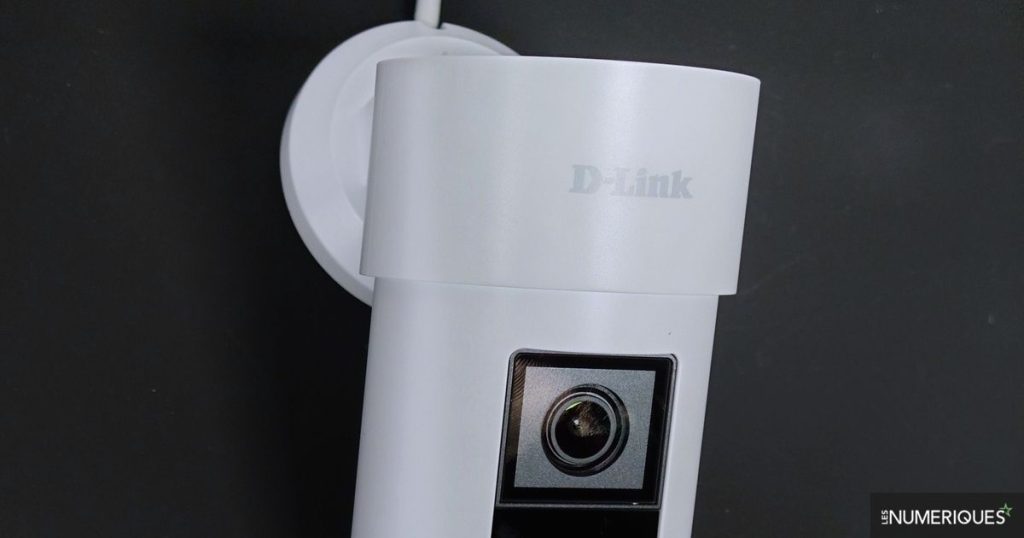
D-Link DCS-8635LH review: A motorized outdoor camera that’s compact and responsive
D-Link equipped the motorized outdoor camera with a 4MP sensor and a wide-angle lens that allows it to deliver images of up to 2560 x 1440 pixels at a horizontal viewing angle of 105 degrees. However, during our tests, Live only allowed us to enjoy the fullest definition. Therefore, monitoring recordings played back by detection do not exceed 1920 x 1080 pixels, whether by storing them on a memory card or in the cloud. Note that it is also possible, in the first case, to lower the definition to 1280 x 720 pixels to save space. No quality adjustment is offered with the cloud, the allotted space is calculated on an hourly basis (7 or 14 days depending on the formula).
However, it would have been nice to at least be able to choose the playback quality to be able to access recordings more easily in case of a bad connection. It’s probably possible to enjoy 2K with an ONVIF recorder, but we didn’t have one on hand. So, we chose to keep our Full HD recordings for the usual comparison, which here goes against the camera HB8 2K+ From Ezviz to D-Link, as always with photos taken in daylight and in the dark. The DCS-8635LH of course offers infrared vision, but there’s no projector or other options for that matter, either for exposure correction or colorimetry.
day
The D-Link camera delivers decent image quality. Although defined at 1080p, the excerpt selected for this comparison provides a good level of detail. The Ezviz camera, with its 2K images, certainly does a little better, but above all in exposure management and image processing the two models stand out. Our photo scene appears overexposed in the DCS-8635LH’s photo, losing a lot of information in bright areas, while the Ezviz’s camera’s strong sharpness allows it to better bring out detail through the image.
night
Unfortunately, it’s not its infrared vision that allows the DCS-8635LH to convert current. If the HB8 2K+ manages to maintain a level of detail similar to that observed during the day once it plunges into darkness thanks to its characteristic, that is far from the case for the D-Link camera. The portrait of the latter lacks sharpness and many details merge with the background, particularly the finest facial features. So it can be difficult to spot an intruder in a nighttime recording, and we might add that there is no projector here to switch to color vision as there is with the Ezviz Camera.
What we observed in the photo scene was confirmed during our identification test. It is difficult to recognize a face over 3 meters on images captured by the D-Link DCS-8635LH and seen in infrared, while a person beyond 4 meters can be identified using the Ezviz model. However, this mediocre image quality does not prevent the D-Link camera from offering detection. Movements are detected from the end of our laboratory, i.e. 10 meters away, and people 9 meters away thanks to artificial intelligence. It should also be noted that infrared vision turns on after 3 seconds in the dark.

“Incurable web evangelist. Hipster-friendly gamer. Award-winning entrepreneur. Falls down a lot.”
